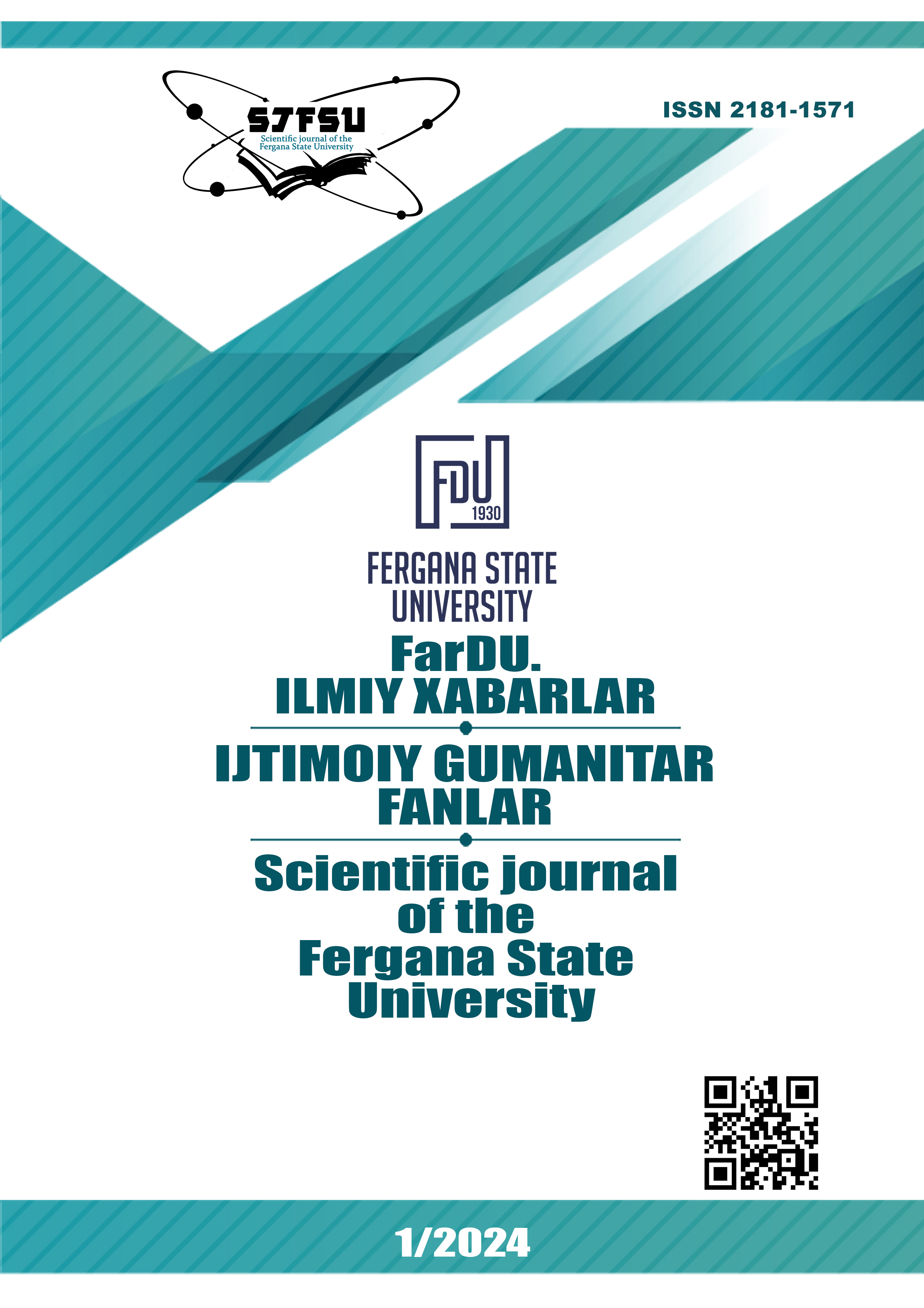INTERACTIVE EDUCATIONAL METHODS USED IN TEACHING MEDICAL BIOLOGY AND GENERAL GENETICS IN MEDICAL UNIVERSITIES
Main Article Content
Abstract
Currently, our developing country in the form of interactive teaching and learning methods will promote more research on the science of teaching, theoretical and practical analysis of the scientific level. The advantages of interactive methods used in teaching medical biology and general genetics in medical universities are revealed, and interactive educational methods in the study of medical biology and general genetics in medical universities are highlighted, in which interactive teaching methods include exercises and The topics section highlights the achievements of the “Brain Brain” methods assault", "Discussion" and "Problem situation", as well as modern requirements for the educational process.
Article Details

This work is licensed under a Creative Commons Attribution-NonCommercial-NoDerivatives 4.0 International License.
References
O‘zbekiston Respublikasi Prezident qarorlari va farmonlar//(№PF-4805 12.08.2020.
O‘zbekicton Pecpublikaci Ppezidentining Fapmoni. «O‘zbekicton Pecpublikaci oliy ta’lim tizimini 2030 yilgachapivojlantipish Konsepsiyacini tacdiqlash to‘g‘picida». 2019 yil 8 oktyabp. PF-5847-con.
Mijung Kim and C. H. Diong (Eds.), Biology education for Social and Sustainable Development, 1–4. © 2012 Sense Publishers. All Rights Reserved
Drori, G. S., Meyer, J. W., Ramirez, F. O. &E. Schofer. (2003). Science in the modern World Polity : Institutionalization and Globalization. Stanford: Stanford University. p. 103.
Escaler, Margarita, Paul Teng &Mely Caballero-Anthony. 2010. Ensuring Urban Food Security in ASEAN: Summary of the findings of the food Securit expert Group Meyeting held in Singapore 4–5 August, 2010. Food Security, 2(4): 407–408.
Fensham, PeterJ. &Harlen, Wynne (1999) School science and public un derstanding of science. International Journal of Sciencey education, 21(7): 755–763.
Malcoln, Shirley, Cetto, A. M., Dickson, D., Gaillard, J., Schaeffer, D. &Yves Quere. (2002). Sciencey education and Capacity Building for Sustainable development. ICSU Series on Science for Sustainable development no. 5. 31 p.
Prahalad, C. K. 2010. The fortuneat the bottom of thepyramid. Wharton School Pub. 407 p.
Sitarz, Daniel. 1994 (ed). AGENDA 21: They earth Summit Strategy to Save our Planet. Earth Press. 321 p.
Teng, P. S. 2007a. Accelerating the renaissancein BIOS cienceyen trepre neurship – Part 1. Asia Pacific Biotech, 11(16): 1138–1145.
J.O.Tolipov . Biologiyani o‘qitishda pedagogik texnologiyalar. –T. 2011 yil.
J.O.Tolipova, G‘ofurov A.T Biologiya o‘qitish metodikasi. –T. 2012 yil.
S.X.Sulliyeva, Q.G‘.Zokirov.BIOLOGIYA O‘QITISH METODIKASI. o‘quv qo‘lanma -5-19 bet
Tolipova J.O. Biologiyani o‘qitishda innovasion texnologiyalar. Pedagogika oliy o‘quv yurti talabalari uchun darslik. “Cho‘lpon” T.: 2011 - 128 bet
Maktab repertuari fanini o‘qtitish jarayonida interfaol usullardan foydalanish// Scientific Bulletin of NamSU-Научный вестник НамГУ-NamDU ilmiy axborotnomasi–2024-yil_1-son //Djalilov Ergash Kenjaevich.

